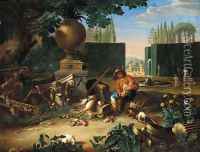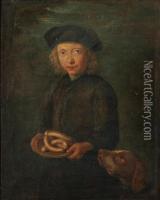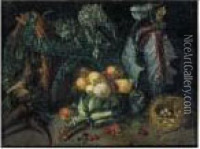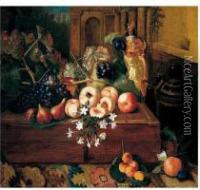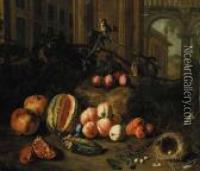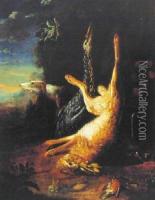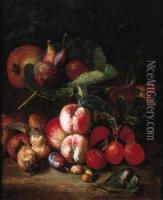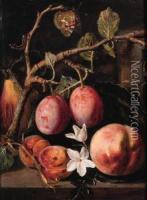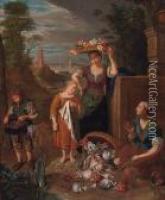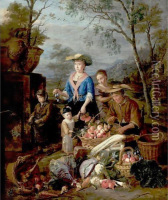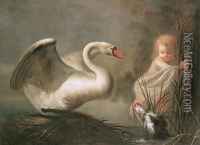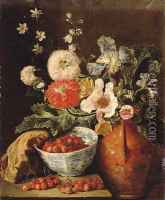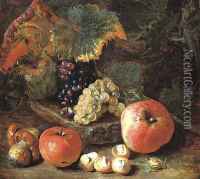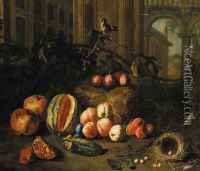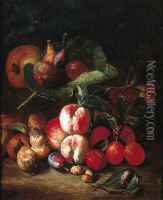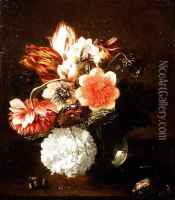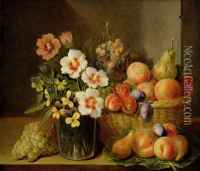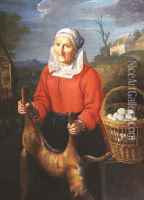Pieter Snyers Paintings
Pieter Snyers, born in Antwerp on October 21, 1681, was a Flemish painter known for his still lifes, genre scenes, and portraits. He began his artistic training at the age of 15 under the tutelage of Alexander van Bredael, a painter of genre scenes and cityscapes. After completing his apprenticeship, Snyers became a master in the Antwerp Guild of St. Luke in 1707, which marked the beginning of his professional career as an artist.
Snyers was influenced by the works of Flemish Baroque painters such as Jan Fyt and David Teniers the Younger, and his early works reflect a strong inclination towards detailed still lifes and intricate genre scenes. His mastery in depicting textures, from the sheen of metallic objects to the translucency of glass and the various surfaces of fruits and fabrics, earned him recognition in his hometown and beyond.
In 1724, Pieter Snyers married Maria Catharina van der Boven, which brought him into contact with the wealthy patronage of his wife's family. This enabled him to work on larger and more ambitious projects. His oeuvre includes a wide array of subjects, such as landscapes, animal studies, and allegorical scenes, showcasing his versatility and adaptability to different genres.
One of Snyers' significant achievements was his involvement in the creation of a book of engravings entitled 'The Book of Drawings', which featured illustrations of his paintings. This book contributed to the spread of his reputation across Europe, as it was a common practice in the 18th century for artists to disseminate their work through engravings.
Throughout his career, Snyers enjoyed the patronage of important figures, including Archduchess Maria Elisabeth of Austria, the governor of the Netherlands. His paintings were sought after by collectors and art lovers, which secured him a comfortable life. In recognition of his contributions to the arts, he was also appointed as the director of the Antwerp Academy in 1751, a position he held until his death.
Pieter Snyers passed away on April 11, 1752, in Antwerp. He left behind a legacy that is characterized by the refinement and quality of his still lifes and genre paintings. His works continue to be appreciated for their meticulous attention to detail and their representation of the Flemish tradition in painting.
